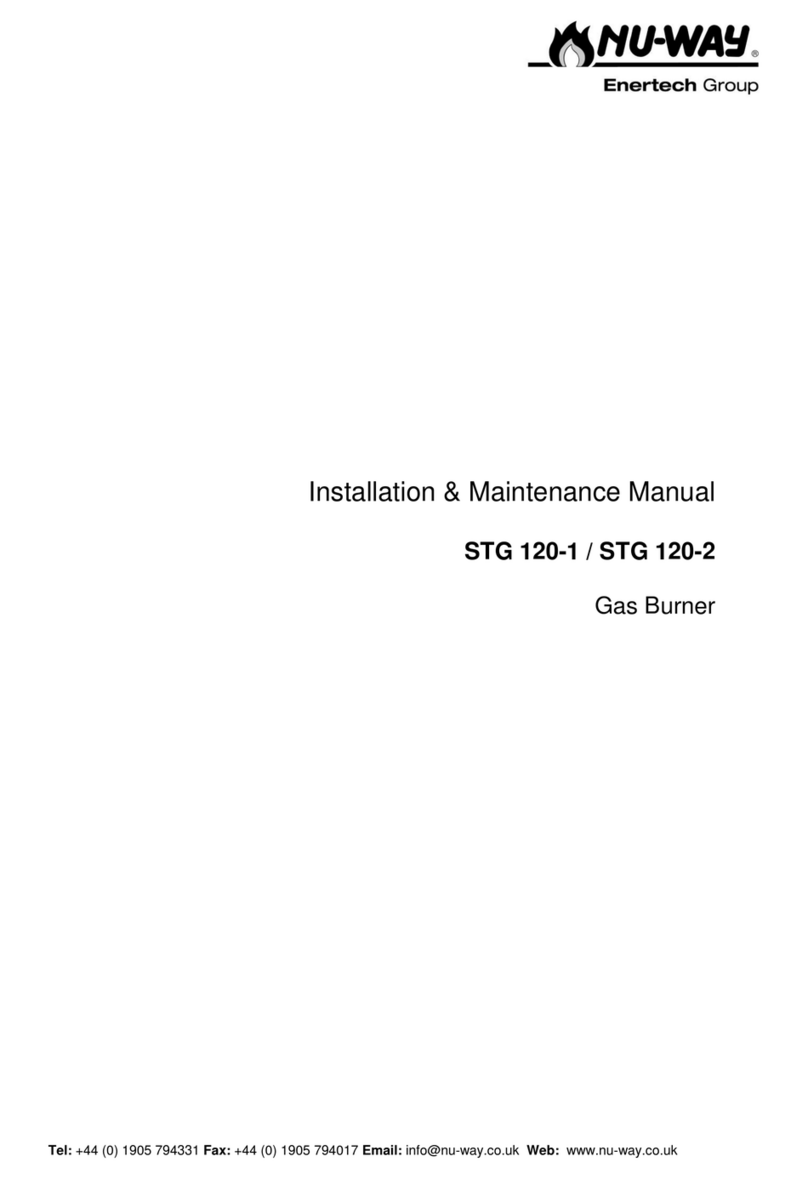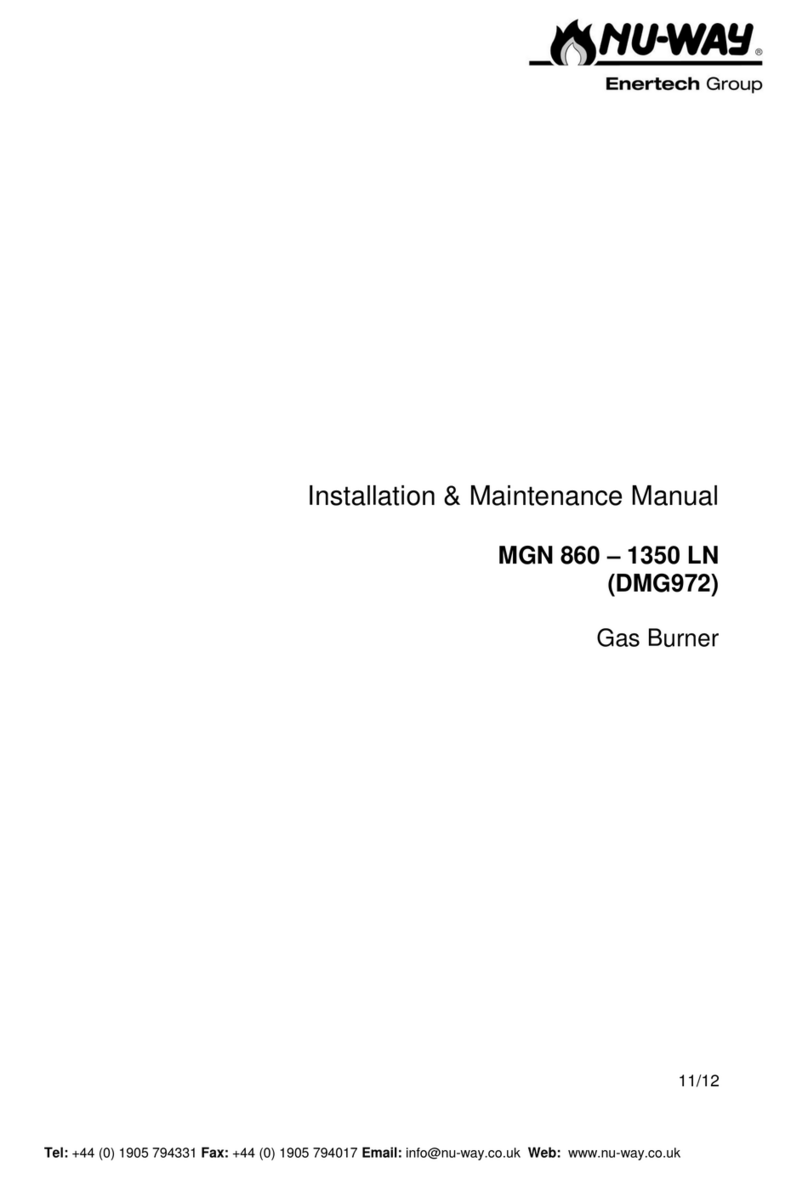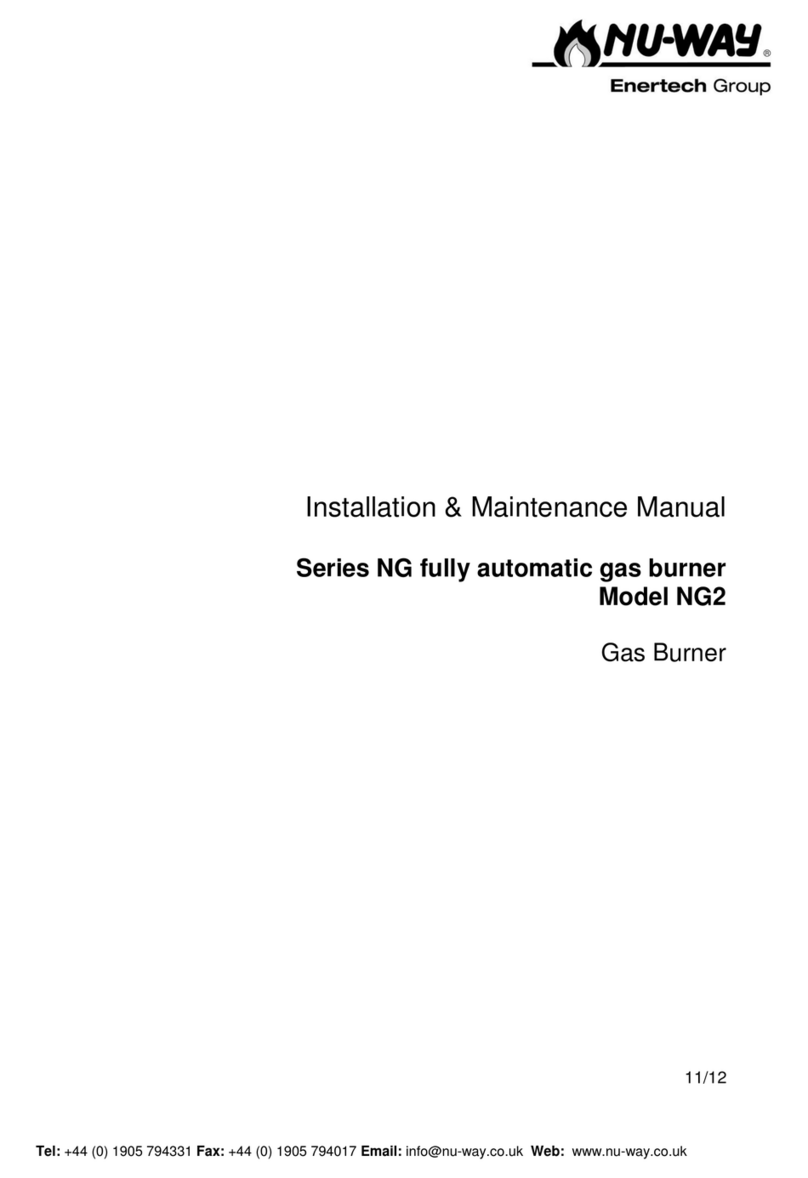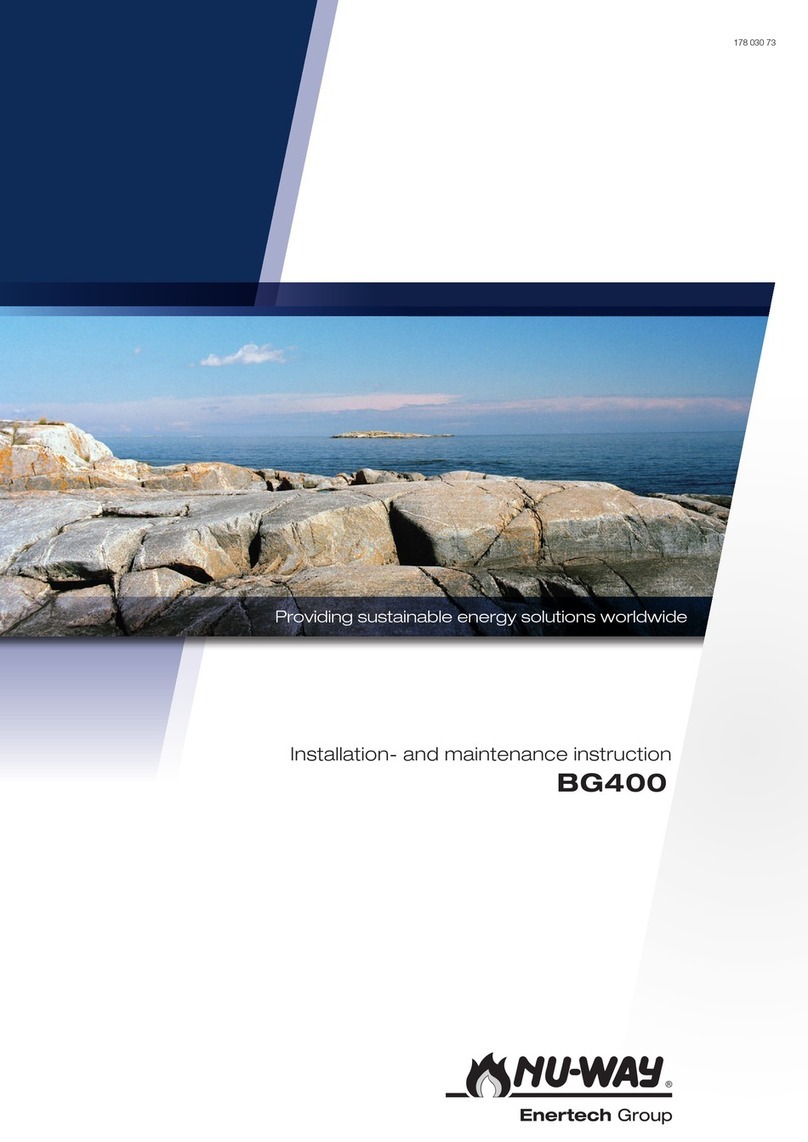COMMISSIONING
The procedure given below is given as a guide to commissioning which should be undertaken by a qualified engineer.
1. Before proceeding further, check that the appliance is in a proper state to be fired.
2. Check electricity is OFF.
3. Check gas is OFF.
4. Check gas and electric connections.
5. Check supply pipe has been correctly purged.
6. Release the spring pressure on the main gas governor to give minimum gas pressure.
7. Set air pressure switch to minimum and set air damper fully open.
8. Check that the overload setting is correct with FLC of motor.
9. Check that all instruments and switches in the burner control circuits are “calling for heat”.
10. With the manual valve still closed, switch on the electricity supply and, if necessary, press the red reset button.
Note the rotation of the fan, which should be anti-clockwise when viewed from the motor side. The direction
can be observed by removing the rubber grommet in the fan scroll. Do not assume correct even if single phase
motor. Switch off. If the fan is rotating in the wrong direction, isolate supply. On three phase motors, change
over any two of the three phases feeding the motor. On single phase motors remove motor terminal cover
plate and interchangeable wires as directed on cove plates. Re-check rotation.
11. Allow the control box to cycle through its start-up sequence, i.e. pre-purge (if the air is controlled on the burner
then damper should move to open for purge and then move to a low position for start-up, ensure this low
position is not fully closed), ignition, pilot valve open. The control box should then go to lockout (the manual
gas valve being in the Off position).
12. Turn on the manual gas cock. Reset control box. The control box will re-cycle through its start-up sequence
and the pilot should light. After a delay, the burner will proceed to main flame.
13. Check flame monitoring signal (see control box leaflet).
If the pilot flame is not reliably established the control will lock out. There may still be air in the pilot gas line,
or the pilot rating may require adjustment.
Reset control and repeat sequence.
14. The pilot gas supply is controlled by a small, manual adjustable valve, together with a pilot governor. The pilot
gas should be adjusted to the minimum flow which will reliably ignite and hold in the flame monitoring control.
The main gas rate is set by screwing in the main governor spring to increase the rating to the desired value.
Once the main gas rate is set the air damper can be adjusted to the appropriate position.
It is not possible to ascertain specific CO2and O2values, reference to the appliance manufacturer should be
made as to whether on ratio or excess air firing is required. However, care should be taken against formation
of carbon monoxide and aldehydes.
15. The rating of the burner should be checked by measuring the pressure drop across the main safety shut-off
valve (but not across combined governor/shut-off valve) and then by reference to the valve data sheet.
16. The air pressure switch setting should now be increased until the burner shuts down. Note the scale reading
and then slacken back the adjustment by 25%.
The unit should now run through several times to confirm that all systems are operating correctly.
Page 2



























